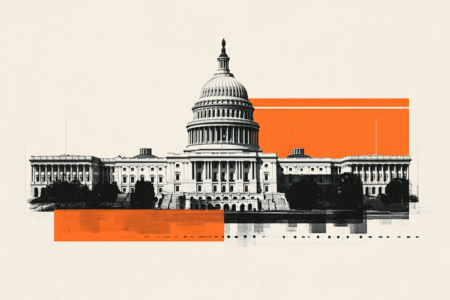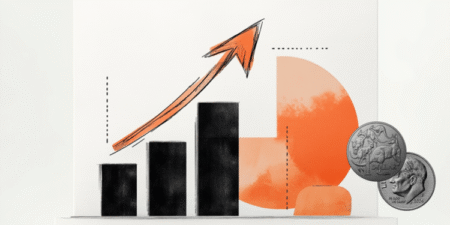- The Pound Sterling performs strongly against its peers on robust UK Retail Sales data for April.
- Month-on-month, UK Retail Sales grew strongly by 1.2%.
- US President Trump’s new bill moves to the Senate after passing in the House of Representatives.
The Pound Sterling (GBP) outperforms its peers, except antipodeans, in European trading hours on Friday after the release of the stronger-than-projected United Kingdom (UK) Retail Sales data for April.
The Office for National Statistics (ONS) reported that Retail Sales, a key measure of consumer spending, rose at a robust pace of 1.2% on the month, compared to estimates of 0.2% and the 0.1% growth seen in March, revised lower from 0.4%. On year, the consumer spending measure grew by 5%, faster than expectations of 4.5% and the prior release of 2.6%.
According to the Retail Sales report, Food stores, Departmental stores, and Household goods stores saw a substantial increase in sales receipts.
Signs of robust household spending are expected to further add to expectations that the Bank of England (BoE) officials will not lower interest rates in the June meeting. This week, hotter-than-expected UK Consumer Price Index (CPI) data for April also forced traders to pare BoE dovish bets.
Meanwhile, flash UK S&P Global Purchasing Managers’ Index (PMI) data for May came in better-than-expected. Still, overall business activity remained contracting as the Composite PMI improved to 49.4, against estimates of 49.3 and from 48.5 in April. Overall business activity declined at a slower pace due to a robust increase in the service sector output. The Services PMI came in at 50.2, higher than expectations of 50.0 and the prior release of 49.0. Meanwhile, the Manufacturing PMI declined at a faster pace to 45.1 from 45.4 in April, below the 46 expected.
Daily digest market movers: Pound Sterling outperforms US Dollar
- The Pound Sterling posts a fresh three-year high around 1.3535 against the US Dollar (USD) on Friday in the wake of upbeat UK Retail Sales data and heightened concerns over the United States (US) fiscal imbalances, which have kept the US Dollar on the backfoot. The US Dollar Index (DXY), which tracks the Greenback’s value against six major currencies, declines to near the two-week low around 99.30.
- Financial market participants are worried that US President Donald Trump’s new bill, which comprises tax cuts, increased spending on defense and border enforcement, cuts in the Medicaid program, and subsidies on green energy, is expected to worsen the already overstretched fiscal deficit.
- According to the nonpartisan Congressional Budget Office, Trump’s new bill would increase the US debt by $3.8 trillion over the decade, which is currently $36.2 trillion. Such a scenario would further damage the US Sovereign credit rating, which was already downgraded by Moody’s to Aa1 from Aaa last week.
- President Trump’s new bill has been approved by the Republican-controlled House of Representatives and is advanced to the Senate, where it is expected to face significant objections. “I expect there will be considerable changes in the Senate,” Republican Senator Ted Cruz of Texas said, Reuters reported.
- On the monetary policy front, Federal Reserve (Fed) officials are expected to continue arguing in favor of keeping interest rates in their current range of 4.25%-4.50% for a longer time, as Trump’s tax bill could be another trigger for high inflation in the economy. Policymakers have already acknowledged that patience is required amid unusually high uncertainty in the wake of new economic policies announced by US President Trump.
US Dollar PRICE Today
The table below shows the percentage change of US Dollar (USD) against listed major currencies today. US Dollar was the strongest against the Euro.
| USD | EUR | GBP | JPY | CAD | AUD | NZD | CHF | |
|---|---|---|---|---|---|---|---|---|
| USD | -0.28% | -0.47% | -0.81% | -0.53% | -0.63% | -0.90% | -0.65% | |
| EUR | 0.28% | -0.19% | -0.55% | -0.25% | -0.34% | -0.61% | -0.36% | |
| GBP | 0.47% | 0.19% | -0.35% | -0.05% | -0.11% | -0.42% | -0.16% | |
| JPY | 0.81% | 0.55% | 0.35% | 0.31% | 0.19% | -0.07% | 0.19% | |
| CAD | 0.53% | 0.25% | 0.05% | -0.31% | -0.12% | -0.36% | -0.11% | |
| AUD | 0.63% | 0.34% | 0.11% | -0.19% | 0.12% | -0.27% | -0.01% | |
| NZD | 0.90% | 0.61% | 0.42% | 0.07% | 0.36% | 0.27% | 0.25% | |
| CHF | 0.65% | 0.36% | 0.16% | -0.19% | 0.11% | 0.00% | -0.25% |
The heat map shows percentage changes of major currencies against each other. The base currency is picked from the left column, while the quote currency is picked from the top row. For example, if you pick the US Dollar from the left column and move along the horizontal line to the Japanese Yen, the percentage change displayed in the box will represent USD (base)/JPY (quote).
Technical Analysis: Pound Sterling refreshes three-year high above 1.3500
The Pound Sterling jumps to near 1.3535 against the US Dollar on Friday. The near-term trend of the GBP/USD pair remains bullish as the 20-day Exponential Moving Average (EMA) is sloping higher around 1.3320.
The 14-day Relative Strength Index (RSI) breaks above 60.00. Should the RSI hold above that level, a fresh bullish momentum would be triggered.
On the upside, the 13 January 2022 high of 1.3750 will be a key hurdle for the pair. Looking down, the 20-day EMA near 1.3320 will act as a major support area.
US Dollar FAQs
The US Dollar (USD) is the official currency of the United States of America, and the ‘de facto’ currency of a significant number of other countries where it is found in circulation alongside local notes. It is the most heavily traded currency in the world, accounting for over 88% of all global foreign exchange turnover, or an average of $6.6 trillion in transactions per day, according to data from 2022.
Following the second world war, the USD took over from the British Pound as the world’s reserve currency. For most of its history, the US Dollar was backed by Gold, until the Bretton Woods Agreement in 1971 when the Gold Standard went away.
The most important single factor impacting on the value of the US Dollar is monetary policy, which is shaped by the Federal Reserve (Fed). The Fed has two mandates: to achieve price stability (control inflation) and foster full employment. Its primary tool to achieve these two goals is by adjusting interest rates.
When prices are rising too quickly and inflation is above the Fed’s 2% target, the Fed will raise rates, which helps the USD value. When inflation falls below 2% or the Unemployment Rate is too high, the Fed may lower interest rates, which weighs on the Greenback.
In extreme situations, the Federal Reserve can also print more Dollars and enact quantitative easing (QE). QE is the process by which the Fed substantially increases the flow of credit in a stuck financial system.
It is a non-standard policy measure used when credit has dried up because banks will not lend to each other (out of the fear of counterparty default). It is a last resort when simply lowering interest rates is unlikely to achieve the necessary result. It was the Fed’s weapon of choice to combat the credit crunch that occurred during the Great Financial Crisis in 2008. It involves the Fed printing more Dollars and using them to buy US government bonds predominantly from financial institutions. QE usually leads to a weaker US Dollar.
Quantitative tightening (QT) is the reverse process whereby the Federal Reserve stops buying bonds from financial institutions and does not reinvest the principal from the bonds it holds maturing in new purchases. It is usually positive for the US Dollar.
Read the full article here
















